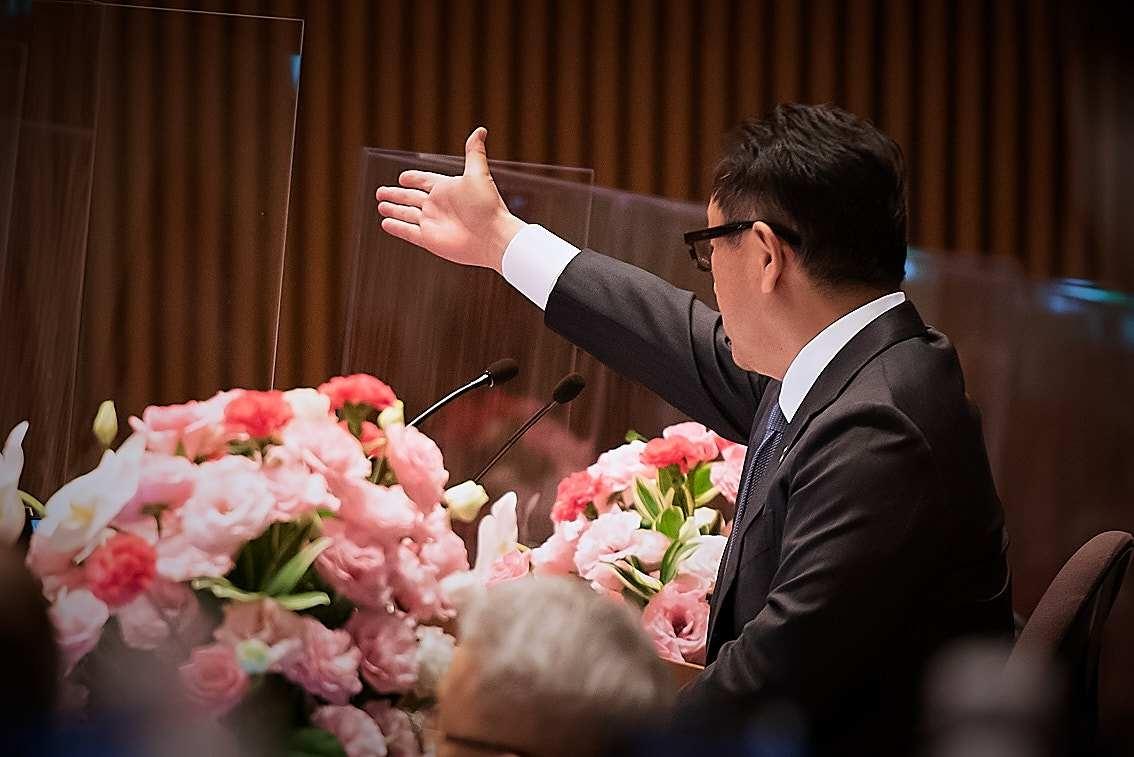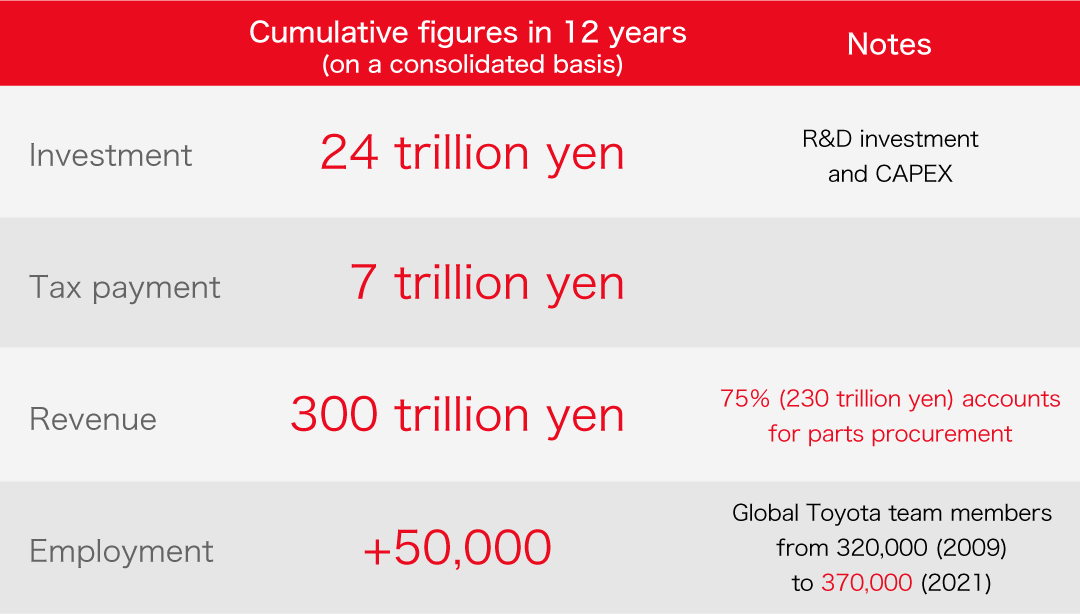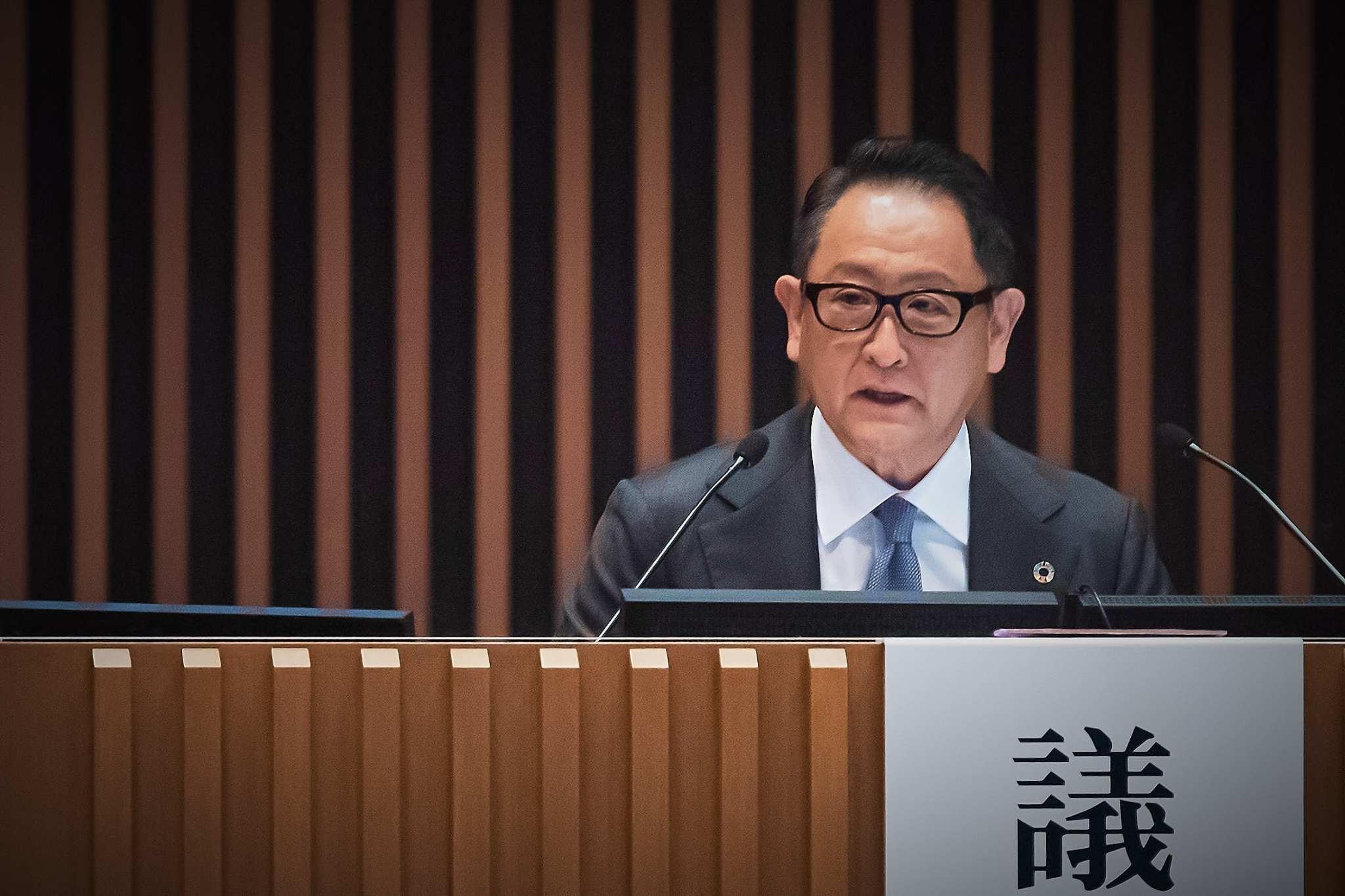
This is the first of a six-part series on Toyota's 2021 Ordinary General Shareholders' Meeting held on June 16. In responding to the first question from a shareholder, Akio Toyoda presented figures demonstrating the contributions Toyota has made to governments, employees, and suppliers.

On June 16, Toyota Motor Corporation held its annual Ordinary General Shareholders' Meeting at its headquarters in Toyota City, Aichi Prefecture. The meeting, which like last year was held amid the COVID-19 pandemic, was attended by 383 people, or about the same number as the previous year.

A general shareholders’ meeting is considered to be the highest decision-making body of a joint-stock company. Akio considers such meetings to be “an important opportunity to pause to review ourselves once a year like looking at ourselves in the mirror”.
Responding to the questions of shareholders who support the company allows Toyota to re-examine itself, including looking at the values it has cherished, the challenges it is facing, and the direction it should take.
Are shareholders thinking that they are glad Toyota exists? Are they happy to own Toyota shares? A general shareholders’ meeting is a valuable occasion for management to get a firsthand feel for the answers to such questions through direct communication with shareholders.
This year’s meeting touched on a variety of topics related to Toyota’s current management. These included Toyota’s social contributions as expressed through its share price and other figures, its approach to carbon neutrality, and its Woven City, a prototype city of the future.
While the content of the meeting was primarily exclusive to the attending shareholders, as it helps to understand how Toyota and its management view the path so far and moving forward, Toyota Times will look back at this year’s meeting in a six-part series, focusing on answers to shareholders’ questions.
The economic impact over these 12 years
The day before the general shareholders’ meeting, Toyota’s shares surpassed 10,000 yen on the Tokyo Stock Exchange. It was the first time for that to happen since the company was listed in 1949.
Share prices are a major concern for shareholders. Triggered by the news of the Toyota share price milestone, the first questioner asked Akio, as the top person who has steered the company, to sum up the 12 years since he became president. Akio responded by giving concrete figures showing Toyota’s contributions to society in terms of paying taxes and creating jobs.

Akio
I still hear some people saying: “Toyota has increased sales and is the only one to come out a winner,” or “What’s the benefit of only Toyota making money?”
What I would like people to understand is that our total sales over the past 12 years amounted to 300 trillion yen. The automotive industry is an industry with a broad supply chain. Because about 70 percent of the parts we use are purchased from suppliers, about 70 percent of our sales was how much we paid to purchase such parts. The cumulative total of that amount was 230 trillion yen.
Considering that the national budget of Japan is 100 trillion yen a year, I think that a considerable amount of money was moved around outside of Toyota.
I have heard some people say that Toyota has much in terms of retained earnings and might not be allocating those earnings correctly. What I would like people to understand is that over the past 12 years, Toyota’s consolidated workforce has increased by 50,000 people, and I would like people to consider the kind of economic impact this has had.

If we assume that an annual household income is 5 million yen, 50,000 people times 5 million yen equates to 250 billion yen going to household budgets.
Also, among calls for an increase in the consumption tax in Japan, as it is said that a 1 percent increase in the consumption tax contributes about 2 trillion yen to the national wealth, a 20 trillion-yen increase in market capitalization is worth a 10 percent consumption tax.

Although this might not be the best occasion for mentioning it, our executive salaries are about three percent lower than they were last year. In our labor-management consultations, the company responded in full (to the union’s wage requests). And we are planning to increase our dividends.
Japan’s biggest company has dreams for the future. I hope that our shareholders will correctly understand the positive impact of such a company and by all means support what it wants to become.
Although the request made by the first questioner stemmed from the situation of the share price, Akio used concrete figures to explain Toyota’s contributions not only to shareholders but also to various other stakeholders, including national and local governments, members of the company, and suppliers in all regions where Toyota operates.
The automotive industry is generally said to have a pyramid structure with finished car manufacturers at the top. And this structure is often described as being one in which the companies at the top dominate and exploit the companies below them.
Against such a backdrop, Akio wanted to make sure that shareholders understood that the automotive industry is not one dominated by finished car manufacturers but rather has grown with various stakeholders and the mutual support of everyone in the industry. The significance of the economic impact of Toyota (and the industry as a whole) was one such example that Akio asked shareholders to understand.
“It is precisely due to crises that more and more Toyota members started to listen to my words and to try to change themselves.”
Akio continued by looking back on 12 years of management while highlighting notions that had become stronger within him and the crises overcome since he became president.
Akio
Ever since joining the company, I have always been treated as a minority because I’m from the founding family. I think I have spent my corporate life in a very lonely environment.
What gradually became stronger and more prominent within me after I became president were my notion that “nothing good comes from confrontation” and my desire to be useful to others and to work for the sake of others.

However, I also believe that I was able to continue as president for 12 years because of various crises. One by one, we have dealt with major crises that are said to occur only once in 100 years, such as our fall into the red due to the global financial crisis, followed by the recall crisis, U.S. Congressional hearings, and Great East Japan Earthquake.
I believe that it is precisely due to these crises that both I and Toyota have been able to survive to this day. And it is precisely due to these crises that more and more Toyota members started to listen to my words and to try to change themselves.
During the past 12 years of an uncharted world, my colleagues and I have tirelessly taken action and faced reality together with those in the genba based on our mission of determining how Toyota should be.
Not all of the actions we took during this period in a daily struggle to survive were correct or successful. We experienced countless failures and made countless mistakes.
But it is because I, together with my colleagues, took action, that our failures came to light, upon which we stopped and also took steps to improve. This is what has allowed us to take in the scenery that we can see today.
The support by our shareholders over the years has enabled us to enjoy this scenery together with all of you.
Although it was just a coincidence that our share price exceeded 10,000 yen the day just before this ordinary general shareholders' meeting, I feel as if we had been given a push in the run-up to today’s meeting.
Akio’s 12 years as president, which started with the company falling into the red after the start of the global financial crisis, have been a constant battle against headwinds. This battle has not only been about taking on the environment surrounding Toyota but also about confronting an internal struggle to “bring back what makes us Toyota”.

As Akio highlighted by sharing several figures at the beginning of the Q&A session, the 12-year battle has resulted in certain achievements, and along the way, there must have been growth within Toyota in many forms.
Not all of such growth was quantifiable and visible. It might be that most of it was hard to see. Nevertheless, from Akio’s viewpoint, Toyota was unmistakably different from that of 12 years ago.

